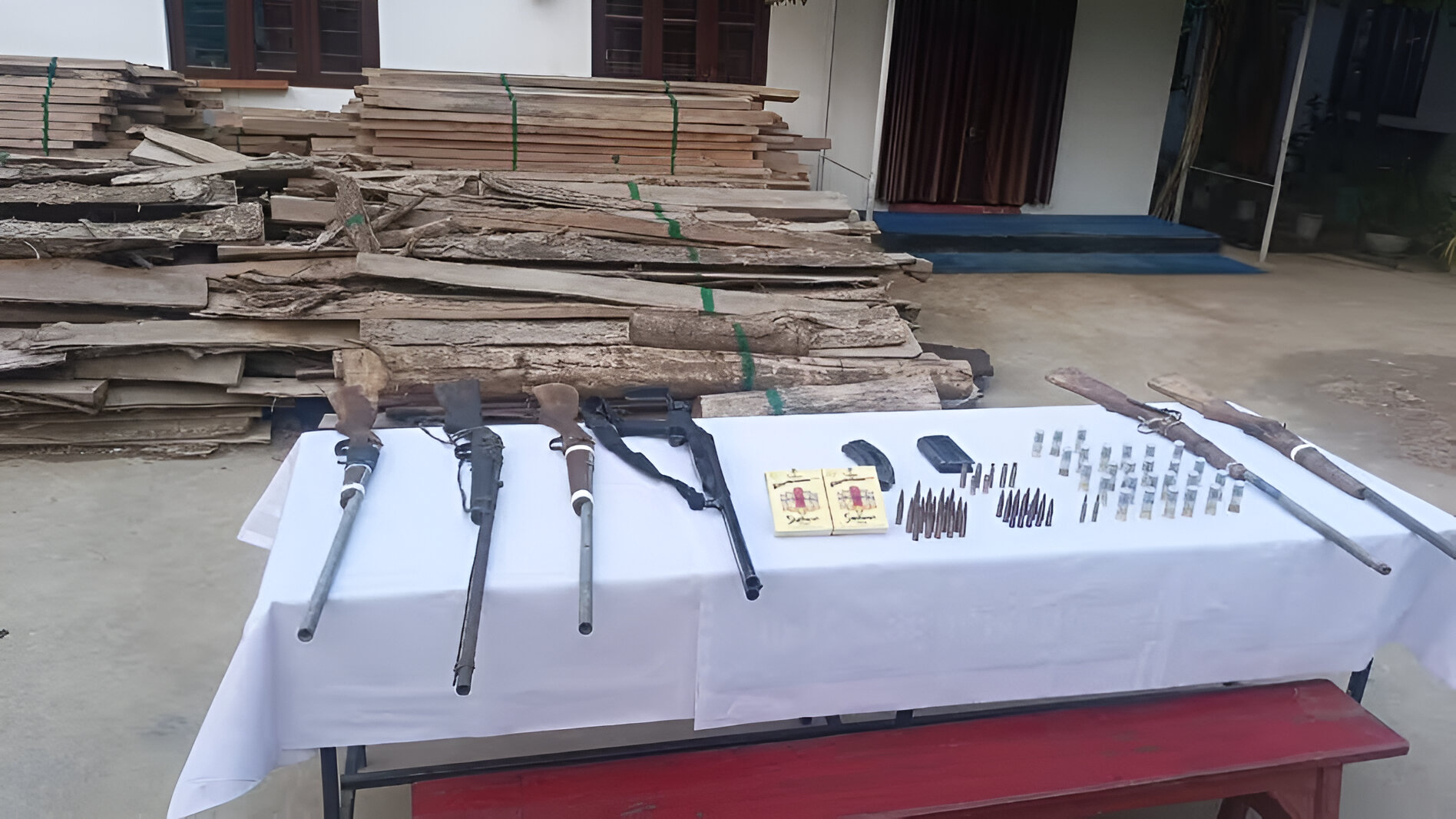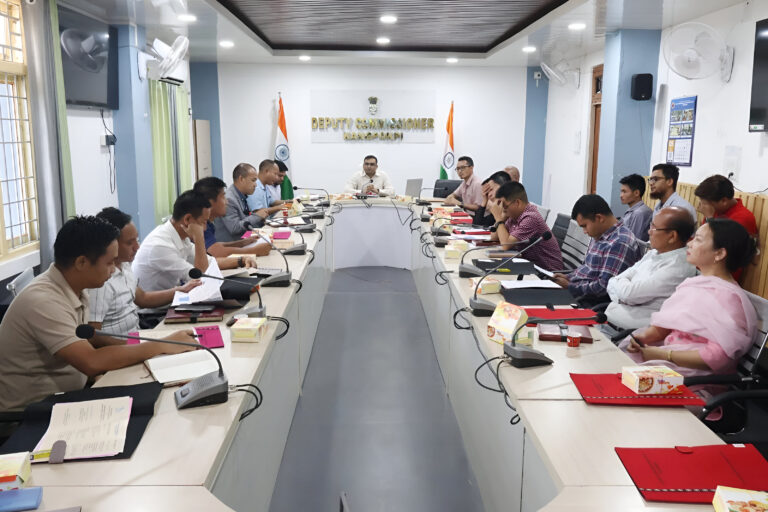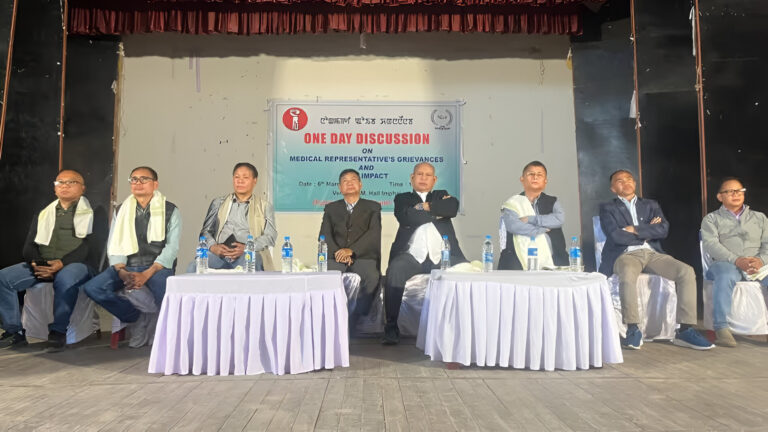Manipur’s Weapon Surrender Drive: A Bold Step Towards a Safer Tomorrow
Introduction
Imagine living in a community where every day feels a little safer, where trust between citizens and law enforcement grows stronger, and where the threat of violence slowly fades into the background. That’s the promise behind Manipur’s weapon surrender drive—a community-focused initiative that has seen another milestone with 20 more firearms being surrendered across four districts. In this detailed exploration, we’ll unpack every aspect of this drive, why it matters, and how it is reshaping the security landscape in Manipur. So, grab a cup of your favorite beverage, get comfortable, and let’s dive into this exciting journey towards a safer tomorrow!
Background of the Weapon Surrender Drive in Manipur
Manipur, a state rich in culture and history, has also faced its share of challenges, including issues related to security and the proliferation of illegal arms. Over the years, the state has seen various initiatives aimed at reducing the number of illicit weapons circulating among communities. The weapon surrender drive is one such initiative—a campaign designed to encourage citizens to voluntarily hand over firearms, thereby curbing the potential for violence and fostering community trust.
Historically, Manipur has experienced periods of unrest due to the circulation of arms and the presence of militant groups. This longstanding issue has prompted local authorities and community leaders to seek innovative solutions to address the root causes of insecurity. The drive not only aims to disarm potentially dangerous elements but also to rehabilitate those who surrender weapons, integrating them back into society with renewed hope and opportunities.
Details of the Recent Handing Over of Firearms
Just when it seemed that the drive was steadily gaining momentum, the latest update brought more encouraging news. In a well-coordinated effort, authorities reported that 20 more firearms have been handed over by civilians in four key districts. This development is particularly notable for several reasons:
- Wide Geographical Reach: The fact that four districts participated in the drive indicates a broad-based commitment from diverse regions of Manipur. It’s not just a localized effort but a state-wide initiative that resonates with the citizens.
- Enhanced Community Participation: Each surrendered firearm represents a decision by an individual to contribute to the collective safety of their community. It’s a vote of confidence in the state’s promise to provide protection and foster peace.
- Boost to Law Enforcement: For the police and other security agencies, every surrendered weapon is a victory—a step closer to de-escalating tensions and preventing potential conflicts. It also underscores the importance of robust law enforcement strategies that focus on prevention and community collaboration.
Think about it this way: each surrendered firearm is like a brick in the foundation of a safer, more secure society. While it may seem like a small step, when multiplied across districts and communities, the impact is transformative.
Significance of the Surrender Drive
You might be wondering, “Why does it matter if 20 more firearms are handed over?” The answer lies in the broader vision of public safety and community empowerment. Here are some reasons why this drive is so crucial:
- Reducing the Risk of Violence: Every firearm that is removed from potential misuse is one less instrument that could be used to fuel violence. By disarming those who might otherwise contribute to conflict, the drive actively reduces the risk of violent incidents.
- Building Community Trust: When citizens see that their contributions lead to a tangible improvement in local security, trust in government and law enforcement grows. This trust is vital for the smooth functioning of any society.
- Encouraging Civic Responsibility: The drive acts as a reminder that everyone plays a part in creating a safe community. It instills a sense of civic duty and encourages individuals to take responsibility for the welfare of their neighbors.
- A Step Toward Long-Term Peace: Disarmament is not just about reducing immediate threats. It’s also about laying the groundwork for long-term social harmony and development. When communities are free from the fear of armed violence, they can focus on growth, education, and prosperity.
In essence, the drive is about more than just collecting old weapons—it’s about reclaiming the future of Manipur and ensuring that every citizen feels secure.
The Role of Local Communities and Law Enforcement
A successful weapon surrender drive hinges on the collaboration between the community and law enforcement agencies. In Manipur, this partnership has been nothing short of exemplary. Let’s break down how this collaboration works and why it’s so effective:
Community Involvement
Local residents are at the heart of this initiative. Their willingness to surrender firearms shows that they are ready to be proactive participants in ensuring community safety. This kind of grassroots involvement sends a powerful message: people are not waiting for change—they are actively creating it. When individuals voluntarily give up arms, they contribute to a collective security effort that benefits everyone.
Moreover, community leaders and influencers play a crucial role in motivating others to join the drive. They often act as bridges between the government and the people, clarifying doubts, dispelling myths, and ensuring that the message of peace reaches every corner of society.
Law Enforcement Strategies
On the other side, the police and security agencies are the backbone of the drive. They not only facilitate the collection of surrendered weapons but also ensure that the process is safe, transparent, and beneficial for all parties involved. Here’s how they manage it:
- Organized Collection Points: Authorities have set up designated collection points across the districts, making it convenient for citizens to participate. These points are strategically located to maximize accessibility.
- Safe Handling and Verification: Every surrendered firearm is carefully documented and verified. This process ensures that no dangerous items slip through the cracks and that all disarmed weapons are accounted for.
- Awareness Campaigns: Law enforcement agencies work hand in hand with local governments to run awareness campaigns. These campaigns educate citizens about the benefits of surrendering arms and the positive impact it has on community safety.
- Follow-Up Support: For many individuals who surrender their weapons, the process is accompanied by counseling and, in some cases, rehabilitation programs. This holistic approach ensures that the drive is not merely about disarmament but also about reintegration and community support.
By working together, communities and law enforcement create a win-win scenario where safety is enhanced, and citizens are empowered to be active contributors to their own security.
Socio-Political and Economic Implications
Every major initiative leaves ripples across society, and the weapon surrender drive in Manipur is no exception. Its implications stretch far beyond the immediate reduction in firearms. Let’s take a closer look at the broader socio-political and economic impact of this drive.
Restoring Public Confidence
Public trust in government institutions is often shaken by incidents of violence and insecurity. However, initiatives like the weapon surrender drive help rebuild that trust. When people see concrete actions being taken to ensure their safety, their confidence in both the government and the law enforcement agencies is restored. This renewed trust can lead to more robust civic engagement, where citizens are more willing to participate in community projects and local governance.
Encouraging Economic Growth
Security is a fundamental pillar for economic development. Businesses, both large and small, thrive in environments where there is a low risk of violence. When a community is secure, investments in infrastructure, education, and healthcare are more likely to flourish. The weapon surrender drive, by creating a safer atmosphere, can indirectly contribute to economic growth. Imagine a scenario where new businesses open up without the constant worry of armed conflicts—it’s an environment where innovation and progress can truly take off.
Political Stability and Social Harmony
Political unrest is often rooted in long-standing grievances and the fear of violence. The drive represents a proactive step in addressing these issues. By removing arms from circulation, the state takes a firm stand against violence, which can lead to increased political stability. Social harmony is also bolstered, as communities feel more secure and less threatened by the presence of illegal arms. This stability paves the way for more constructive political dialogues and reforms that benefit the entire state.
A Model for Future Initiatives
Manipur’s initiative can serve as a blueprint for other regions facing similar challenges. The success of this drive could inspire neighboring states and even national policymakers to adopt similar measures. The underlying principle is simple yet powerful: disarmament leads to empowerment, which in turn fosters a more peaceful society. Such initiatives have the potential to create a ripple effect, leading to broader reforms and a unified approach to tackling the challenges of arms proliferation across the country.
Community Empowerment and Trust Building
At the heart of the weapon surrender drive is the goal of empowering local communities. When individuals are given the opportunity to play a direct role in enhancing their own safety, it fosters a sense of ownership and responsibility. Here’s how community empowerment is being achieved through this drive:
A Sense of Ownership
When people voluntarily surrender firearms, they are taking an active step towards reclaiming control over their future. It’s an acknowledgment that safety is a shared responsibility and that every person has a role to play. This sense of ownership can transform communities, making them more resilient and united in the face of challenges.
Building Bridges Between Communities and Authorities
Trust is the cornerstone of any successful security initiative. The weapon surrender drive has opened channels of communication between local residents and law enforcement. Regular interactions during the drive, transparent processes, and visible results have all contributed to strengthening these bonds. As trust builds, communities become more proactive in collaborating with authorities, whether it’s sharing crucial information or participating in local safety programs.
Empowering the Vulnerable
Often, those most affected by violence and insecurity are also the most vulnerable—be it the youth, women, or marginalized communities. By creating a safe environment, the drive provides these groups with the space they need to thrive. With less fear of violence, children can attend schools with peace of mind, and women can participate more actively in public life, ultimately leading to a more balanced and inclusive society.
Comparative Analysis with Other Surrender Drives
Manipur’s weapon surrender drive isn’t an isolated phenomenon. Across India and in many parts of the world, similar initiatives have been implemented with varying degrees of success. What sets Manipur’s effort apart is its comprehensive approach, which integrates community participation, law enforcement efficiency, and long-term rehabilitation.
Lessons from Global Initiatives
Take, for example, disarmament drives in Latin America or parts of Africa. These initiatives have often focused solely on removing arms without addressing the social and economic factors that drive people to possess them in the first place. In contrast, Manipur’s approach is more holistic. It not only focuses on disarmament but also emphasizes public awareness, community trust, and the reintegration of individuals into society. This integrated model can serve as a benchmark for future programs both within India and internationally.
The Importance of Adaptability
One of the key strengths of Manipur’s initiative is its adaptability. The drive has evolved over time, incorporating feedback from communities and adjusting its methods to better meet local needs. Whether it’s setting up more accessible collection points or providing additional support to those surrendering weapons, the program remains dynamic. This adaptability ensures that the initiative remains effective in the face of changing circumstances and emerging challenges.
Challenges and Future Prospects
No initiative is without its challenges, and the weapon surrender drive in Manipur faces a few obstacles that need to be addressed to ensure its long-term success.
Addressing Skepticism and Fear
Despite the many benefits, there remains a level of skepticism among some community members. Past experiences, mistrust of authorities, or simply fear of repercussions can deter individuals from coming forward. To overcome this, continuous community engagement and transparent communication are crucial. Authorities must keep reassuring the public that the drive is in their best interest, creating a safe space for dialogue and participation.
Ensuring Comprehensive Rehabilitation
Surrendering a weapon is often just the first step. The real challenge lies in ensuring that individuals who give up their arms are provided with adequate support to reintegrate into society. This means access to counseling, vocational training, and other rehabilitation services. A comprehensive support system is essential to prevent recidivism and to truly transform lives.
Scaling the Initiative
As more regions recognize the benefits of such drives, there may be pressure to scale the initiative across larger areas or even nationwide. While scaling up can amplify the positive impact, it also presents logistical challenges. Ensuring consistency in implementation, managing resources, and maintaining the quality of the program will require careful planning and sustained commitment from both state and central governments.
Looking Ahead
The future of Manipur’s weapon surrender drive looks promising, provided these challenges are met with proactive strategies. Continuous evaluation, adaptive measures, and strong community relationships will be key to sustaining momentum. With the current success as a foundation, there is potential for broader social reforms that address not only disarmament but also the socio-economic factors contributing to insecurity.
Conclusion
In wrapping up our exploration of Manipur’s weapon surrender drive, it’s clear that this initiative is much more than a simple disarmament exercise. It represents a visionary step toward transforming the security landscape of a state that has long grappled with the dual challenges of historical unrest and modern-day safety concerns. By encouraging citizens to voluntarily surrender their firearms, Manipur is not only reducing the risk of violence but also building a community that is informed, empowered, and ready to work together for a common good.
Every surrendered weapon tells a story—a story of hope, of a community determined to break free from the cycle of fear and violence. The collaboration between local residents and law enforcement stands as a testament to what can be achieved when trust, transparency, and proactive measures come together. As Manipur continues on this journey, the lessons learned here could very well serve as a model for other regions, inspiring similar initiatives that blend security with socio-economic development.
In a world where the threats of violence and unrest are often highlighted by media headlines, it’s important to remember the power of positive change driven by everyday citizens. Manipur’s weapon surrender drive is proof that, with the right mix of determination, empathy, and strategic planning, even the most deeply entrenched challenges can be addressed. Here’s to a future where safety, progress, and community spirit lead the way—a future that is built one surrendered firearm at a time.
FAQs
- What is the main goal of Manipur’s weapon surrender drive?
The primary goal is to reduce the circulation of illegal firearms, thereby enhancing community safety and building trust between citizens and law enforcement. - How does the surrender drive benefit local communities?
It fosters a sense of ownership and collective responsibility for safety, builds stronger community-police relations, and paves the way for long-term socio-economic development. - What measures are in place to support individuals who surrender their weapons?
Authorities offer counseling, rehabilitation programs, and vocational training to ensure that individuals can reintegrate into society successfully after surrendering their firearms. - How is the drive being implemented across multiple districts?
The initiative uses designated collection points, community awareness campaigns, and coordinated efforts between local authorities and law enforcement agencies to reach out to citizens across four districts. - What are the future prospects for this initiative?
With continued community engagement and government support, the drive is expected to expand and serve as a model for similar initiatives across other regions, contributing to long-term peace and stability.


